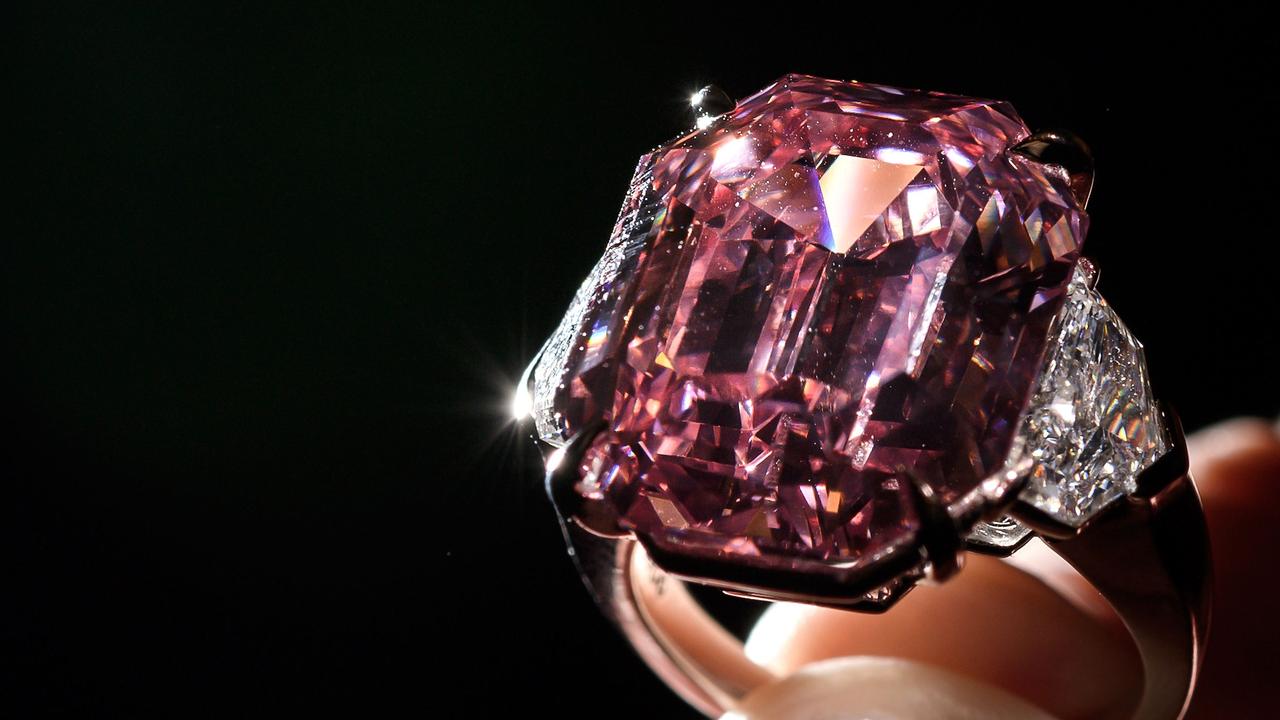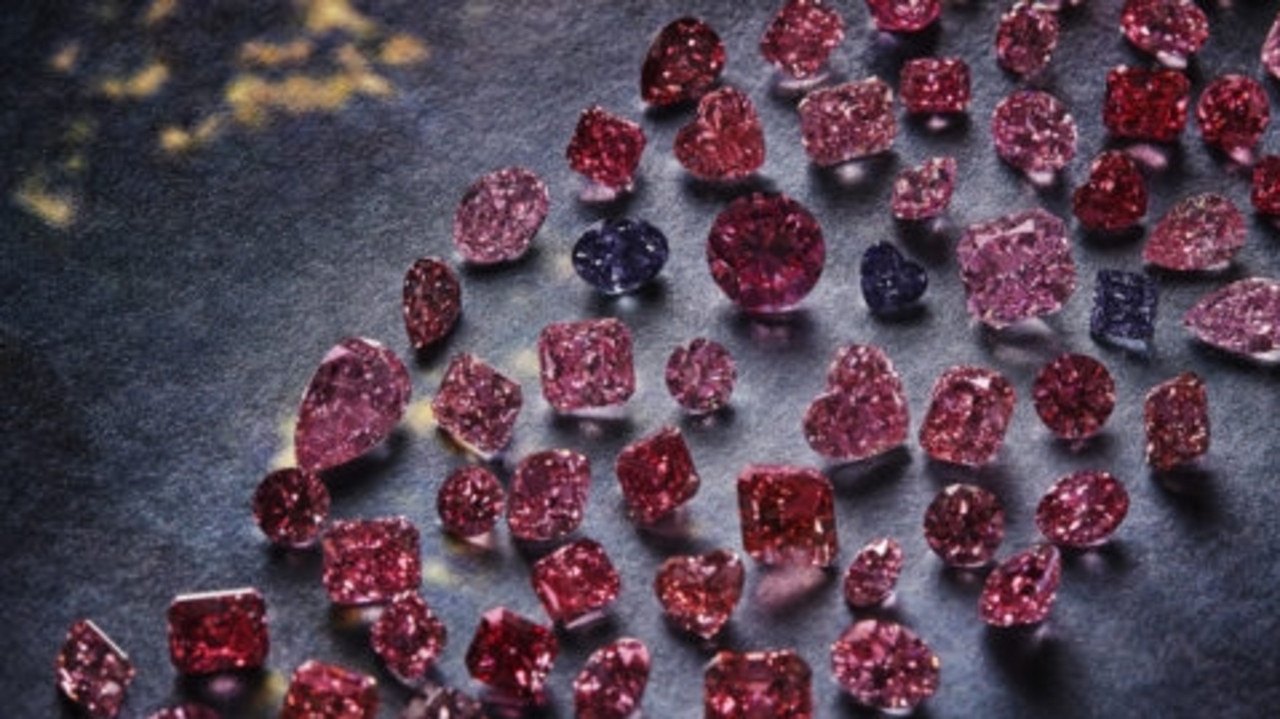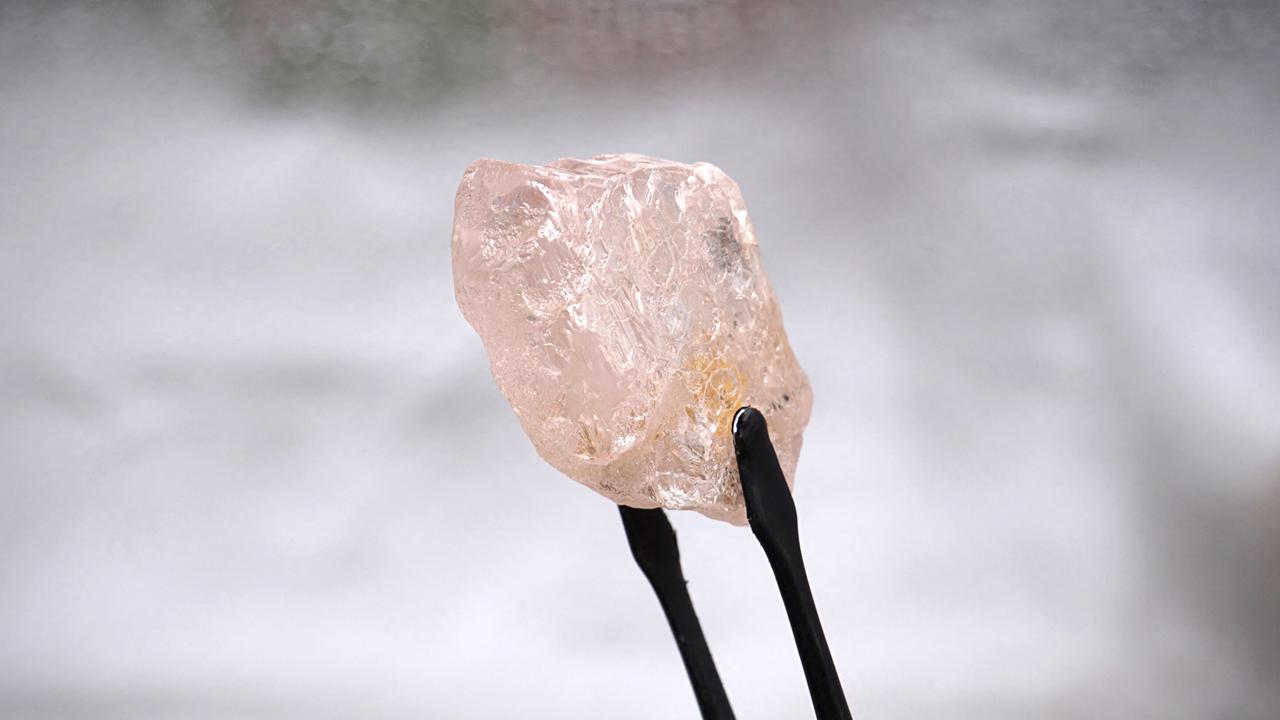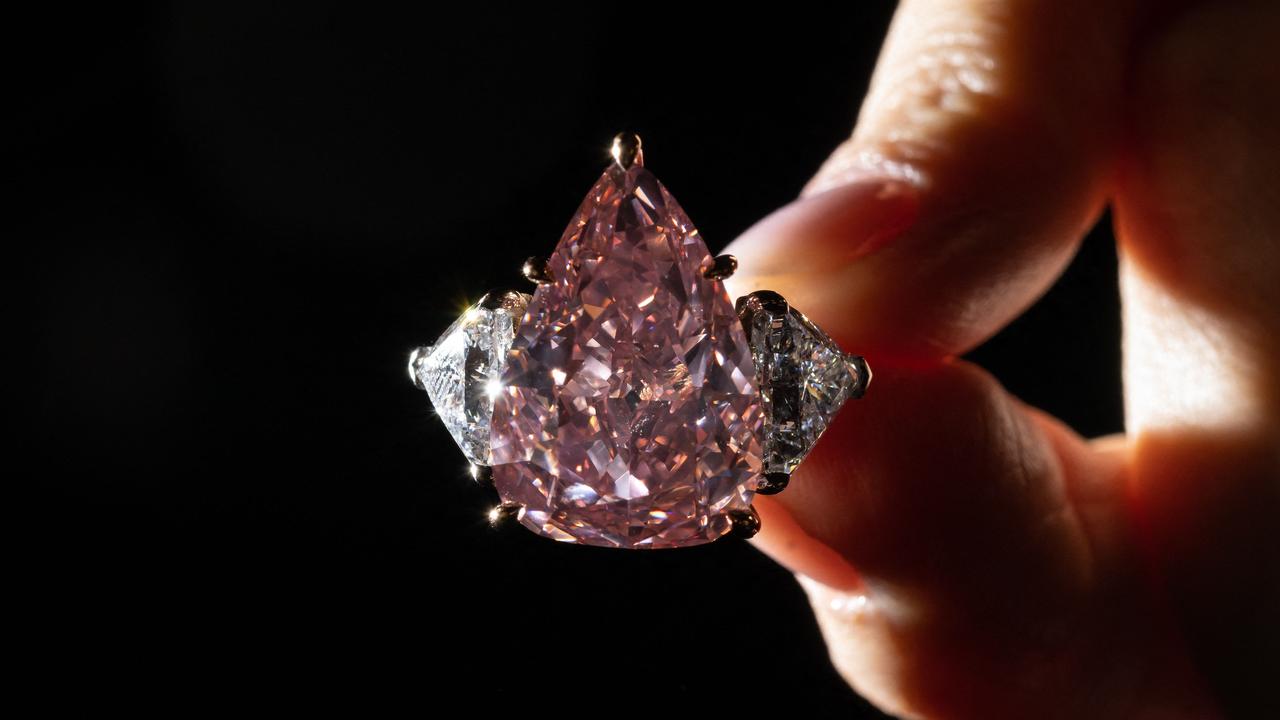‘Fountain’ of rare pink diamonds discovered in WA
Scientists have found the origins of a pink diamond mine in WA, potentially revealing where more rare stones can be discovered.

While all forms of diamonds are coveted, rare pink versions are particularly highly sought after.
Pink diamonds, along with red, green and purple, are among the rarest colours of diamonds. Polished pink specimens of the highest grade can sell for tens of millions of dollars, while the candy coloured gems adorn the engagement rings of celebrities including Jennifer Lopez and Blake Lively.
Even the late Queen Elizabeth II was among pink diamonds’ most high-profile fans, having been gifted a 54-carat intense pink diamond when she married the Duke of Edinburgh in 1947.

WA’s renowned Argyle diamond deposit was the source of 90 per cent of the world’s pink diamonds. The mine at Argyle has closed, making pink diamonds all the more rare, but researchers believe they now understand how and when the striking stones were formed.
The scientists, who published their findings in Nature Communications on Tuesday, used tiny lasers to analyse miners and rocks extracted from the Argyle deposit. They found the pink diamond-rich site formed during the break-up of an ancient supercontinent, called Nuna, about 1.3 billion years ago.
“While the continent that would become Australia didn’t break up, the area where Argyle is situated was stretched, including along the scar, which created gaps in the Earth’s crust for magma to shoot up through to the surface, bringing with it pink diamonds,” explained lead study author Hugo Olierook, a research fellow at Curtin University’s John de Laeter Centre in Perth.

How diamonds are formed
Earlier this year, a separate study confirmed that diamonds explode from deep beneath the Earth’s surface in volcanic eruptions they described as “fountains”.
The findings, published in Nature in July, led scientists to believe the break-up of supercontinents is what causes these huge, diamond eruptions.
“The diamonds have been sat at the base of the continents for hundreds of millions or even billions of years,” Thomas Gernon, a professor of Earth and climate science, told LiveScience.
“There must be some stimulus that just drives them suddenly, because these eruptions themselves are really powerful, really explosive.”
The result, Professor Gernon said, is “like shaking a bottle of champagne”. The eruptions have huge explosive potential and buoyancy, rocketing the diamonds up to Earth’s surface.

When diamonds glow pink
For diamonds to turn pink or red, as they often did at Argyle, they must be subjected to intense forces from colliding tectonic plates that twist and bend their crystal lattices. Most brown diamonds are also formed in this manner.
At Argyle, this process occurred around 1.8 billion years ago when WA and Northern Australia collided, turning the once-colourless diamonds pink hundreds of miles below Earth’s crust.
The research team found that the Argyle deposits were 1.3 billion years old, from a time when an ancient supercontinent, known as Nuna, was breaking up into fragments.
“By using laser beams smaller than the width of a human hair on rocks supplied by Rio Tinto (the company that owned the mine), we found Argyle to be 1.3 billion years old, which is 100 million years older than previously thought, meaning it would likely have formed as a result of an ancient supercontinent breaking apart,” Dr Olierook said.

This chain of events, according to the study, suggested the junctures of ancient continents may be important for finding pink diamonds, which could help diamond minerals as they explore for other ultra valuable deposits.
“Most diamond deposits have been found in the middle of ancient continents because their host volcanoes tend to be exposed at the surface for explorers to find,” Dr Olierook said.
“Argyle is at the suture of two of these ancient continents, and these edges are often covered by sand and soil, leaving the possibility that similar pink diamond-bearing volcanoes still sit undiscovered, including in Australia.”
Get in touch — chloe.whelan@news.com.au
Originally published as ‘Fountain’ of rare pink diamonds discovered in WA





